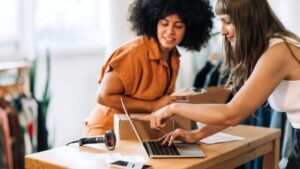Why nature-based solutions are a useful tool to curb climate change losses

Why nature-based solutions are a useful tool to curb climate change losses | Insurance Business Canada
Insurance News
Why nature-based solutions are a useful tool to curb climate change losses
They can work alongside other solutions to build resilient communities
Insurance News
By
David Saric
While insurance companies, the government and Canadian citizens work hard to safeguard properties from the increasing threat of nat cat events, nature-based solutions can be an effective solution.
According to Matt Rocha, Zurich’s North American lead for climate resilience, using nature to create resilience is a “win-win situation.”
“Not only are you getting a potential carbon sink where we can absorb greenhouse gases within a solution, but we’re also getting that benefit of physical risk reduction,” he said.
“For example, having a green space within an area that is going to provide a heat sink from the surrounding ambient temperature, but it’s also going to allow that ground to absorb rainwater, so you have potentially less flash flooding incidents.”
While he noted how this type of mediation is not particularly new, it does offer another tool for communities and businesses to better safeguard from catastrophic losses.
Furthermore, nature-based solutions can also be a cost-saving endeavour, with the National Issues 2021 report from the Government of Canada revealing that, on average, investments in climate risk reduction can result in about four to 12 dollars saved for each dollar invested.
In additional findings that Rocha pointed to, it is estimated that nature-based solutions can also lead to cost savings to the tune of 30-70% compared to “hard” alternatives.
The Zurich leader spoke about the topic at length during the Canadian edition of RIMS at the Shaw Convention Centre in Ottawa this past September.
In a follow-up interview with Insurance Business, Rocha discussed how these nature-based solutions are part of a bigger community effort on greenhouse reduction and building resilience, and why building back better is so important.
It takes a village
As extreme weather events take a heavy toll on Canadian businesses and residents, the push to curb rampant climate change-related losses is an effort that will require different resources and a community focus.
“We can’t narrow our focus and only look to nature-based solutions to create change,” Rocha said.
“But it can be what we call hybrid solutions, right, which is a mix of an engineered solution, and a nature-based one to find the most effective method to provide operational and physical resilience.”
While insurance companies can help spearhead the initiatives or conversations to trigger change, they will ultimately have to involve the government, the private sector and, most importantly, actual communities, to provide holistic resilience.
“This problem cannot be solved with just one entity. We have to spread that across everybody,” Rocha said.
Part of thinking strategically is assessing how certain solutions may or may not be beneficial to a certain environment and ecosystem, especially when contemplating nature-based interventions.
“If you’re specifically concerned about wildfires and are looking to nature-based solutions, then you should be more hesitant towards using increased vegetation as a carbon sink, since the potential for a secondary effect is there,” Rocha said.
“You don’t want to introduce a new hazard to an area without doing a full analysis of that to understand potential trickle-down effects.”
The importance of building back better
While Rocha said that the term “build back better” gets thrown around a lot these days, its core value of integrating resilience into a physical structure is of utmost importance.
“I like to think of it as building above minimum,” he added.
“It’s about looking past that minimum standard, which may or may not be appropriate for property development, and really owning that risk and finding ways to integrate it into future plans.”
Since climate change is ever evolving, construction codes and expectations should also be in a state of flux and re-evaluation to create more stable and solid structures.
“Doing this takes time,” Rocha said.
“However, we need to speed that up so we’re building community resilience to withstand whatever loss event is coming up.”
Related Stories
Keep up with the latest news and events
Join our mailing list, it’s free!






